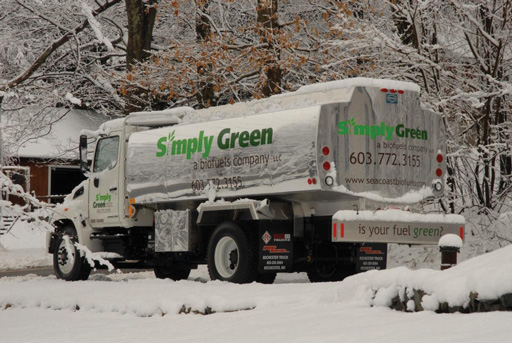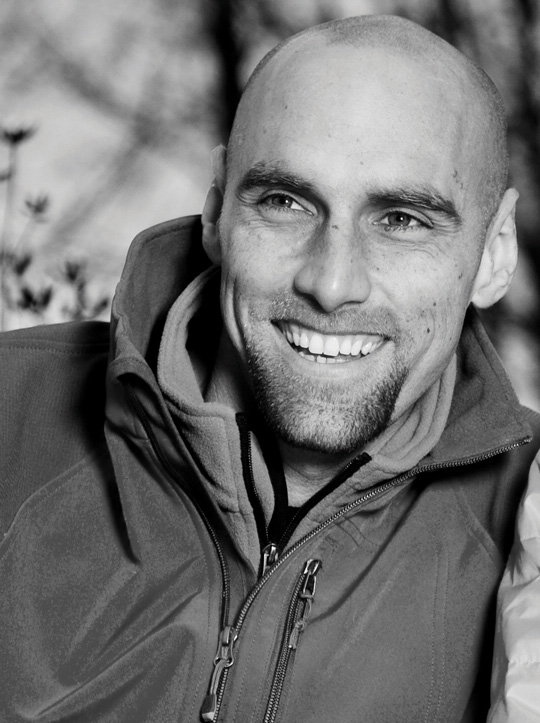This is “Case: Sustainable Business Entrepreneurship: Simply Green Biofuels”, chapter 7 from the book Sustainable Business Cases (v. 1.0). For details on it (including licensing), click here.
For more information on the source of this book, or why it is available for free, please see the project's home page. You can browse or download additional books there. To download a .zip file containing this book to use offline, simply click here.
Chapter 7 Case: Sustainable Business Entrepreneurship: Simply Green Biofuels
Introduction to Simply Green

Simply Green
Source: Simply Green.
Learning Objectives
- Understand the motivations of the entrepreneur Andrew Kellar in starting the sustainable business Simply Green Biofuels.
- Explain the key challenges faced by the entrepreneur and the start-up company and how they were addressed.
- Understand how the entrepreneur used personal relations and social networks to inform and support his efforts.
- Discuss the ecological and social values of the entrepreneur and how the business he started reflected those values.
- Understand the performance of the entrepreneur and the start-up venture from a triple bottom line perspective.
- Discuss the role of the entrepreneur’s public relations efforts in informing and educating potential customers about sustainable business products and services.
- Explain what an entrepreneur has to do well to have a successful business venture through the start-up phase and into the growth phase.
This case provides the example of a start-up sustainable business venture. Its purpose is to provide the student with a detailed look at the challenges of entrepreneurship and of small company management in a sustainable business enterprise. Students should consider this case in the context of the triple bottom line—people, profit, and planet.
Simply Green Biofuels (http://www.simplygreenbiofuels.com) offers green alternatives to home heating, diesel, and marine fueling in the seacoast New Hampshire and southern Maine area. The company’s flagship biofuelA fuel source generated from a renewable, biological source, such as corn, soybeans, or algae. blends can be used without any changes to a customer’s heating system or motor vehicle engine. In four years, from 2007 to 2011, the company grew its customer base to more than 1,400 customers and, according to Biofuels Digest, established itself as one of the leading companies in the bioenergy sector nationally. Its founder, Andrew Kellar, was named one the “25 Leaders for the Next 25 Years” by BusinessNH Magazine in 2009.
The company’s biofuels are locally sourced from waste vegetable oil (WVO). Typically, WVO is collected as recycled vegetable oils from restaurants and distributors. Once it’s refined into a petroleum-like fuel, it is combined with traditional petroleum products to make biofuel blends.
The company offers a bio heating oil product called BioHeat and biodiesel for motor vehicle use in three different blends. The only difference between BioHeat fuel and biodiesel motor engine biofuel is that BioHeat is blended with no. 2 heating oil, and biodiesel is blended with diesel fuel. The blends and their environmental attributes and benefits are as follows:
- B5. B5 is a blend of 5 percent biofuel and 95 percent no. 2 heating oil or diesel fuel. By using B5, the typical consumer will reduce their CO2 emissions by 4 percent or the equivalent of planting fifty-two trees.
- B20. This blend contains 20 percent biofuel and 80 percent no. 2 heating oil or diesel fuel. By using B20, the typical consumer will reduce their CO2 emissions by 16 percent or the equivalent of planting 192 trees.
- B100. This blend contains 100 percent biofuel and no no. 2 heating oil or diesel fuel. In its purest form, biofuel is a highly solvent product that breaks down any petroleum residue (e.g., sludge) that has built up in a system over time.
Every heating and motor vehicle manufacturer has endorsed the use of B5. However, Simply Green states that after B5 has been run for a sufficient amount of time (typically after a couple deliveries), customers may be able to “bump up” to a B20 blend.

Source: Simply Green.
Sidebar
Biofuels Contribution to Reduction of Greenhouse Gas
Biofuels offer the potential to reduce greenhouse gas (GHG) emissions because the carbon in the plant matter from which biofuels are produced comes from the carbon dioxide absorbed by the plants from the atmosphere during their lifetime. This is in contrast to the carbon in fossil fuels, which has been sequestered underground for millions of years and is released into the atmosphere as carbon dioxide when the fuels are burnt. Biofuels can lead to significant GHG emissions savings compared to fossil fuels.

Andrew Kellar
Source: Simply Green.
One might think that Simply Green started partly out of necessity and partly out of Andrew Kellar’s passion and concern for the environment. Andrew Kellar identified an opportunity—a market niche that was not being filled—and he developed a business to meet that opportunity. But that is not how he or Simply Green got started. In 2003, Simply Green was founded by Andrew as an erosion control and hydro-seeding business. It was a seasonal business that fit well with Andrew’s preferred lifestyle. It enabled him to pursue his passion for outdoor activities, including surfing in Mexico with his wife during the cold winter seasons in New Hampshire. His passion for the environment started when he was young. In addition to surfing as a youth, he was constantly doing activities to help protect the environment, including beach cleanups and recycling.
As Simply Green’s hydro-seeding business grew, the company required additional trucks and equipment, which, in turn, required the use of more and more diesel fuel. Andrew, with his love for the outdoors, became increasingly concerned about the negative environmental impact of his company’s use of diesel. This concern led Andrew to investigate alternatives. Were there options for fuel that could still power his business but reduce his negative impact?
Andrew had heard of people collecting grease from McDonald’s or other fast food restaurants and then using it to power their motor vehicles. This intrigued him and he started to see if there was a biofuel alternative to power the vehicles and equipment for his business.
Starting in 2006, Andrew started looking into the biodiesel market more deeply. At the time, there was limited availability in northern New England. He could only locate two gas stations that provided biodiesel, one that was somewhat close to his operating area and one that was two hours away. Also there was only one home heating fuel provider in the area that offered biodiesel, but it was not their main focus; instead, it was a specialty product that they offered.
For Andrew, a personal change was one of the major factors that convinced him to move forward into biofuels. Andrew and his wife, Ginger, received a phone call from the Florida Department of Children and Families. There were three young children that were in need of a home who were relatives of the Kellars. The Kellars took the children in. Andrew’s new parenting role and responsibility got him to think about how he could positively impact society and the earth and also how he was going to help support the three new additions to the family. This convinced him to start the business.
As Andrew describes, fate may have had a hand in the situation: “What really kicked me over was that phone call. The phone call that we were going to be parents instantly…And, call it fate, call it whatever you want, but I had just finished doing a hydro seeding job for this one customer and I was researching online where the supply sources were and it said, for more information on our biodiesel, contact Tim Keaveney. And I looked down, this one evening, and there was a check from Tim K for the hydro seeding I just did.”




